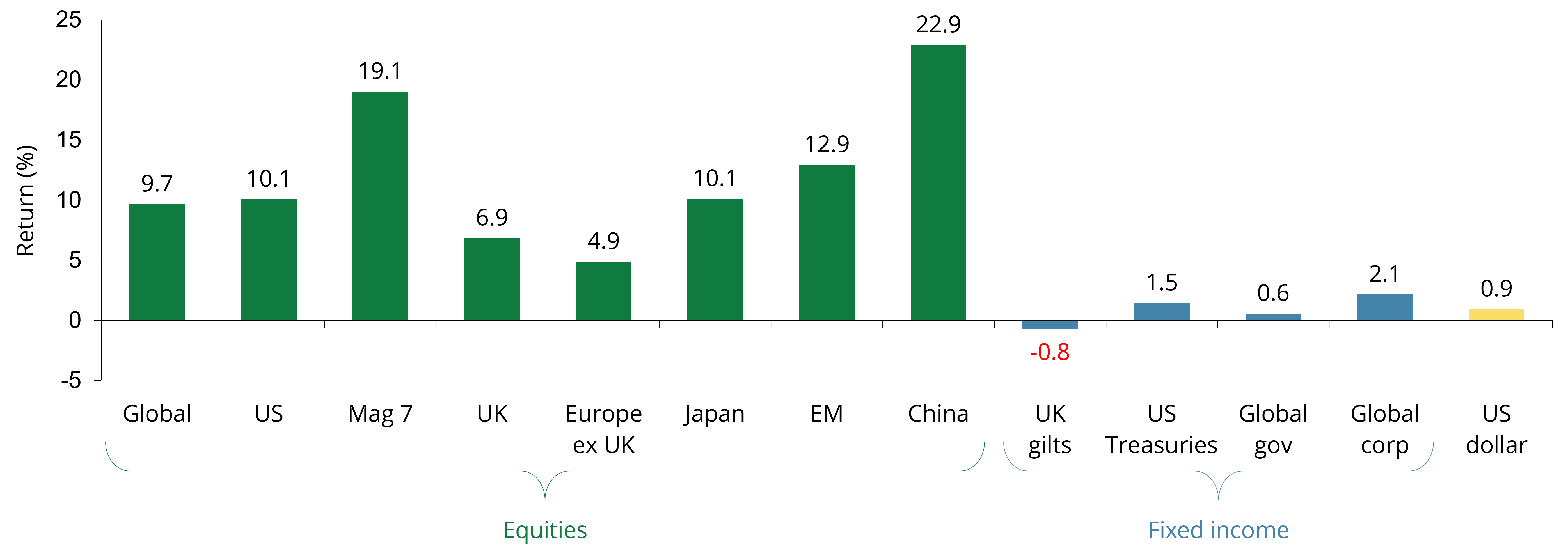Our market summary
The third quarter of 2025 saw strong gains with global equities up by 9.7%. This was driven by strong performance from AI and technology stocks, solid corporate earnings, and a widely anticipated US Federal Reserve (the Fed) rate cut with the suggestion of more to follow. Easing trade tensions and resilient economic data further supported risk assets. However, persistent inflation, political uncertainty, and ongoing geopolitical tensions remained headwinds. Investors benefited from diversification, as both equities and corporate bonds performed well, while government bond markets were mixed. Overall, the quarter highlighted the importance of balancing growth opportunities with risk management in a dynamic environment.







